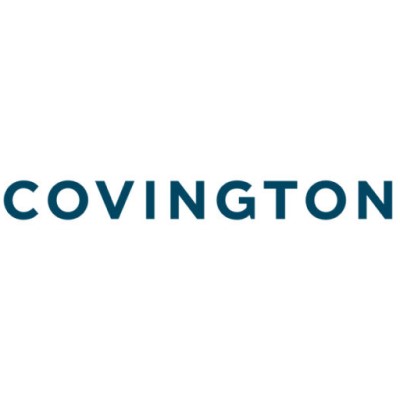Articles
China Restructures its Drug Pricing Regime

In early May 2015, China’s National Development and Reform Commission (“NDRC”), together with six other agencies, issued a Circular Concerning Opinions on Advancing the Drug Pricing Reform (“Opinions”).1 The Opinions initiate a groundbreaking reform of the drug pricing system in China. Until now, pursuant to China’s Drug Administration Law and related policies and regulations, the government has either set specific prices, or set price ceilings, i.e., maximum retail prices (“MRPs”), for many drugs in China, including those that are reimbursed via its state- run insurance plans. The Opinions remove many of the constraints on drug prices, permitting those prices to be set by the market, and also provide some details of a planned reform to better set reimbursement standards and rates for drugs.
The first step in the price reform process was minor revisions to the Drug Administration Law (“DAL”) on April 24, 2015 by the Standing Committee of the legislature, the National People’s Congress (“NPC”). These revisions, among other things, removed Article 55, which provided the basis for the government-set drug pricing system.
Subsequently, pursuant to the Opinions, as of June 1, 2015, the government will no longer restrict the price of drugs currently covered by the government pricing system (with the exception of narcotic and certain psychotropic drugs). As part of this reform, NDRC has also issued two additional mandatory guidelines related to drug pricing. The Guideline on Publishing the Annulled Drug Pricing Documents (“Annulment Guideline”) annulled previous NDRC decisions that set MRPs for various drugs. The Guideline on Enhancing the Supervision of Pricing Activities in the Drug Market (“Pricing Activities Guideline”) mandated that the NDRC’s Price Supervision and Anti-Monopoly Bureau (“Pricing Bureau”) scrutinize illegal pricing behavior and intensify enforcement activities in the drug sector.
The shift from government-set drug prices to a market-driven system will have a significant impact on pharmaceutical companies operating in China. Together with the proposed reforms in the procurement and reimbursement systems, drug companies should closely monitor for how these changes will affect them. This alert summarizes the most significant changes to the system.
Market-driven Drug Pricing System
The first step of the reform is to abolish the 15-year-old government-led pricing system for the innovative and generic drugs that used to be covered by MRPs.2 The system will remain in place for narcotic drugs and certain high risk psychotropic drugs. Under the old system, NDRC was in charge of setting MRPs, or otherwise guiding prices, for drugs included on the National Reimbursable Drug List (“NRDL”), which is the list of drugs that the state-run health plans can reimburse in all provinces. Under the old system, the NDRC also regulated prices for drugs with compounds patented in China, certain psychotropic drugs, narcotic drugs, and vaccines.
Beginning on June 1, 2015, according to the Opinions, drug prices will follow new rules:
- • For drugs reimbursed by government medical insurance funds, the Ministry of Human Resources and Social Security (“MOHRSS”), which administers some aspects of the state-run insurance plans, will determine reimbursement rates or standards.
- • For patented drugs or drugs exclusively produced by one manufacturer, the price shall be set through a transparent negotiation mechanism involving multiple parties, such as hospitals (most of which are state-run hospitals), provincial governments and other stakeholders. The Opinions are not clear on which other stakeholders may be included in the negotiation.
- • For blood products outside of the NRDL, vaccines subject to the government’s system of centralized procurement, government-provided HIV treatment drugs, and contraceptive drugs and devices, the price will be determined through the bidding processes or procurement negotiations. Currently, hospitals and their pharmacies purchase drugs through bidding processes or procurement programs that are determined and run by local government authorities (provincial-level and below).
- • For narcotic and certain psychotropic drugs, although the Opinions do not expressly state the rules for those products, the government will likely still set an MRP on the basis of a formula that combines a restricted set of reportable costs (ex-factory prices) and a permitted profit margin.
- • For all other drugs, the price can be set freely by the manufacturers, provided that it accurately reflects their costs and supply and demand.
The Opinions state that when setting reimbursement rates or standards for drugs that can be reimbursed by government-backed insurance schemes, the MOHRSS should work with relevant agencies to account for a variety of factors, such as what is ambiguously referred to as “actual market prices,” the availability of medical insurance funds, and the financial capacity of the patients.
The Opinions stop short of providing any detail about the multi-party negotiation mechanism for patented drugs, potentially because NDRC will no longer serve a leading role in this process. However, the National Health and Family Planning Commission, which is the chief healthcare regulator, is reportedly drafting rules that will establish a national drug price negotiation supervisory committee and create procedures for carrying out the negotiation. This draft rule is circulating internally in the government. Its primary focus will be on patented drugs (or drugs manufactured exclusively by one company) in the areas of oncology, cardiovascular, pediatrics, and “public health.” It is not clear whether the scope of the draft rule will expand to cover other patented drugs.
Enforcement Against Illegal Pricing
The Pricing Activities Guideline states that over the next six months the government (i.e., the NDRC’s Pricing Bureau) will intensify its enforcement activities against “illegal pricing conduct” by companies benefiting from the price liberalization. Among other things, this enforcement program will target:
- • Falsification or fabrication of information that increases prices and disrupts market order;
- • Collusion to set prices or manipulation of market prices;
- • Sale of drugs at unreasonably high-prices through abuse of a dominant market position;
- • Fabrication of “original” prices (i.e., costs), falsification of “price labels,” provision of misleading “price tags,” or deliberately concealing unfair pricing conditions. (Pricing labels and tags refer to the way in which the price is represented); and
- • Increased prices for drugs that have already been included in the centralized procurement programs.
In addition to this enforcement program, the Pricing Bureau will closely monitor the ex-factory prices or corresponding imported prices (set in roughly the same way as ex-factory prices) of “drugs with insufficient competition.” It will also monitor drugs, which have prices with irregularities, such as frequent or significant fluctuations and significant differences with prices in other countries or in different regions in China. If necessary, the Pricing Bureau will conduct pricing investigations to verify the costs of drugs that raise these issues. If a drug company is found to be engaging in significant violations, the Pricing Bureau can make a recommendation to procurement authorities to forbid participating in drug procurement programs for two years.
Potential Reimbursement Reform
The Opinions very briefly touch upon the important role of medical insurance authorities, i.e., the MOHRSS, in controlling drug price increases. As discussed above, these authorities are required to issue the rules on the formulation of reimbursement standards by the end of September 2015. In NDRC’s press release, it states that the government will enhance coordination between the medical insurance schemes and the procurement system, and allow the new reimbursement standards, subject to adjustments, to wield greater influence. This will prompt medical institutions and pharmacies to control prices within those limits through the procurement (including bidding) processes.
1 The six other agencies are the National Health and Family Planning Commission, the Ministry of Human Resources and Social Security, the Ministry of Industry and Information Technology, the Ministry of Finance, the Ministry of Commerce and the China Food and Drug Administration.
2 This pricing system was initially established under the Circular concerning Opinions on Reforming Drug Price Administration issued by the State Planning Commission (the predecessor of NDRC) on July 20, 2000.
If you have any questions concerning the material discussed in this client alert, please contact the following members of our Food & Drug practice group:
Shaoyu Chen +86 10 5910 0509 schen@cov.com
Scott Cunningham +1 415 591 7089 scunningham@cov.com
John Balzano +1 212 841 1094 jbalzano@cov.com
Yan Luo +86 10 5910 0516 yluo@cov.com
Richard Li +86 21 6036 2510 rli@cov.com
This information is not intended as legal advice. Readers should seek specific legal advice before acting with regard to the subjects mentioned herein.
Covington & Burling LLP, an international law firm, provides corporate, litigation and regulatory expertise to enable clients to achieve their goals. This communication is intended to bring relevant developments to our clients and other interested colleagues.
www.cov.com





